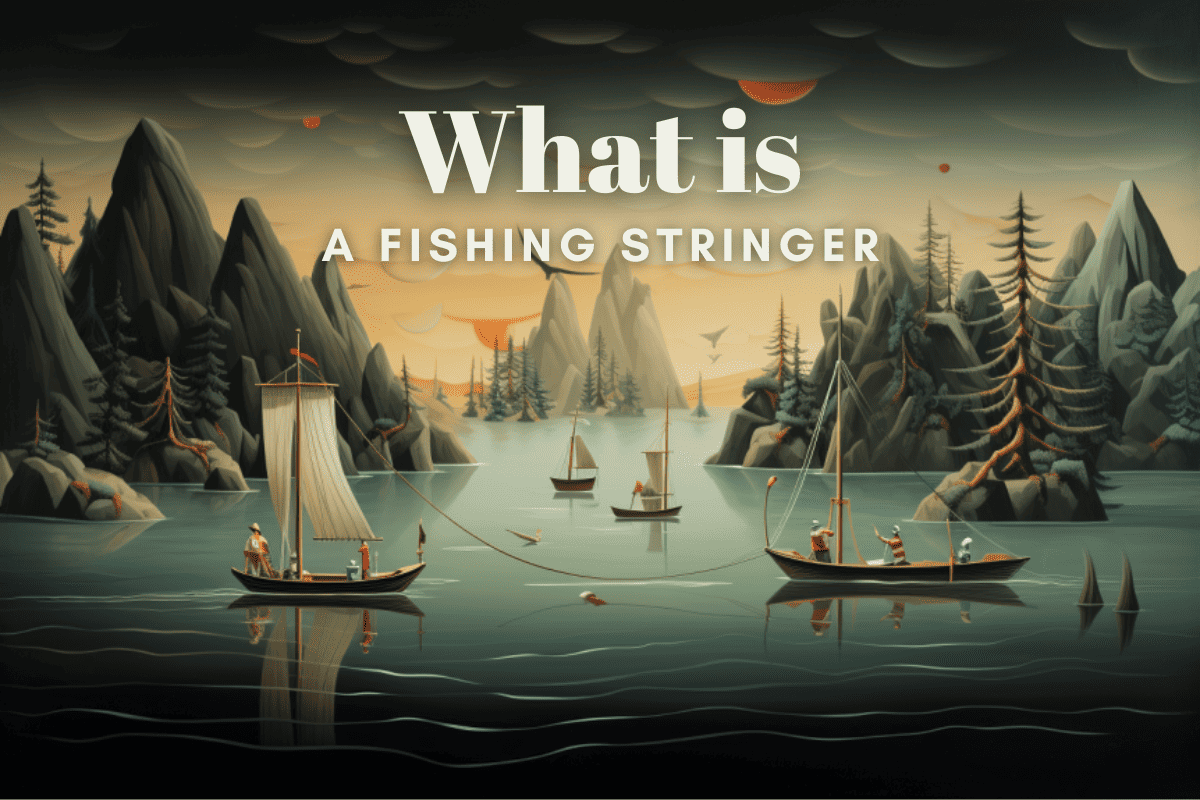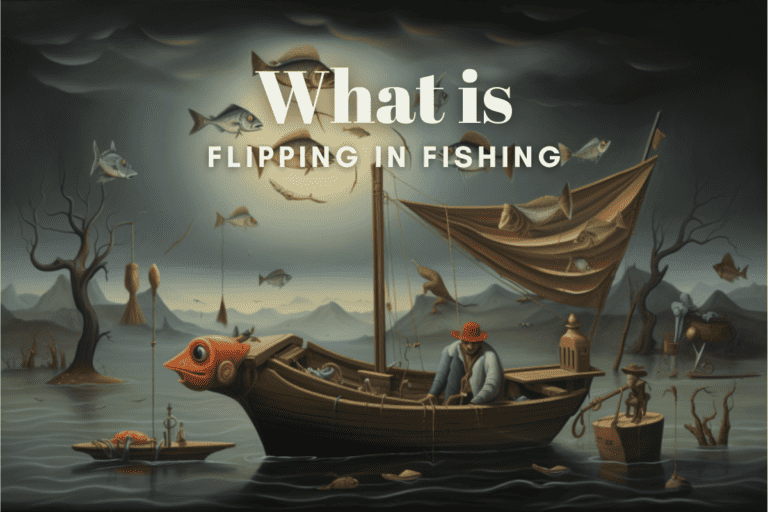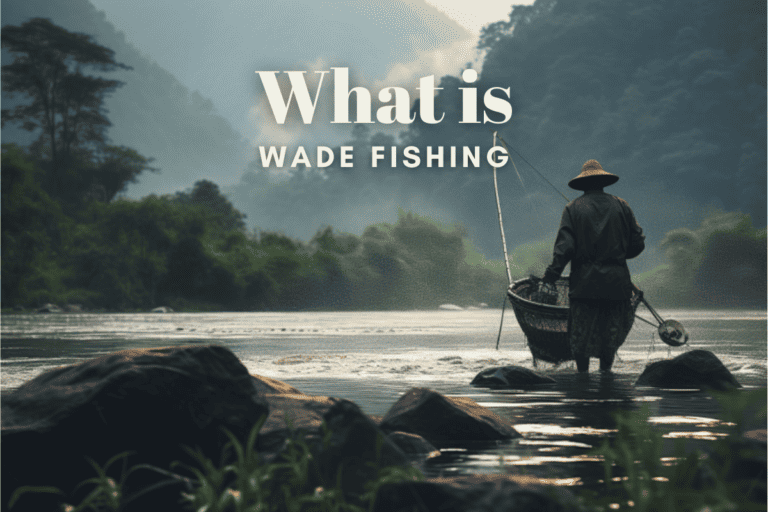What is a Fishing Stringer? When to Use a Stringer vs Basket

Navigating the sea of fishing gear can be daunting. In the age-old debate between stringers and fish baskets, there’s no one-size-fits-all answer. It’s about what floats your boat and suits your needs.
This article dives into the nitty-gritty of these tools, comparing their pros and cons.
So whether you’re a seasoned angler or a newbie, you’ll be well-equipped to make the best choice for your next fishing adventure.
What is a Fishing Stringer? Understanding the Basics of Stringers and Fish Baskets
When you’re out on a fishing adventure, especially from a kayak, it’s essential to have a reliable method to keep your catch fresh and alive. This is where the terms fish stringers and fish baskets come into play. These tools are designed to keep fish alive and fresh until you’re ready to head back to shore. Let’s delve into the basics of these devices.
Fish Stringers:
A fishing stringer is a device used to hold many fish that have been caught, ensuring they stay alive and fresh in the water. There are various types of fish stringers, but the simplest and most common are rope stringers and chain stringers.
- Rope Stringers:
- Made of heavy-duty paracord or similar material.
- One end has a metal ring to secure the fish, while the other might have a metal stake or a simple knot.
- To use a fish stringer of this type, you pierce a hole through the fish’s lower lip or pass the rope through the gill and out the mouth. Then, slide the fish back through the metal ring to secure the fish in place.
- Chain Stringers:
- Chain stringers are made of metal links, with individual clasps to secure each fish.
- They are a little more durable than rope stringers and can be used for heavier catches.
- Like rope stringers, you run the stringer through the fish’s mouth or gill, but instead of a knot, the end has a metal ring to secure the fish.
Using a fish stringer on a kayak is straightforward. Once you’ve caught fish, you can attach the stringer to your kayak and keep your catch in the water, allowing the fish to breathe and stay alive. It’s a good idea to learn how to use a stringer properly, especially if you’re into kayak fishing, to keep your fish alive longer.
Fish Baskets:
Fish baskets, sometimes known as live wells, are used to keep fish alive and fresh in a contained space. They are typically made of wire mesh and float in the water.
- Usage:
- After catching a fish, place it inside the basket. The wire mesh allows the fish to breathe and also keeps fish from getting away.
- Fish baskets are especially handy if you plan to catch and release, as they prevent the fish from getting injured.
- Advantages:
- Fish baskets can also keep fish alive longer than stringers, especially if you have a big haul.
- They are ideal for fishing from a kayak, as they can be attached to the side or kept at the bottom of the boat.
Whether you opt for a rope or chain stringer, or a fish basket, these tools are essential for any kayak fisherman. They not only keep your fish fresh but also allow for a more humane way to hold fish until you decide your next step. So, the next time you head out for a fishing trip, especially if you’re fishing from a kayak, ensure you have a stringer or fish basket in your tackle box. It’s not just about the catch; it’s also about keeping your catch fresh and alive until you’re ready to head home.
Practical Guidance: Using a Stringer Effectively
Using a fish stringer might seem straightforward, but to ensure the well-being of your catch and maximize the freshness of the fish, there are some best practices to follow. Here’s a guide to using a stringer effectively:
- Choose the Right Type:
- Depending on the type of fish you’re targeting and the environment you’re in, decide between a rope or chain stringer. Rope stringers are versatile and lightweight, making them suitable for most freshwater fish. In contrast, chain stringers are more durable and ideal for larger, saltwater species.
- Secure Your Stringer:
- Before attaching any fish, ensure one end of the stringer is securely fastened to your boat, kayak, or yourself. This prevents the stringer (and your catch) from drifting away.
- Stringing the Fish:
- Always be gentle. Slide the sharp end of the stringer through the fish’s lower lip or, alternatively, pass it through the gill and out the mouth.
- Once the fish is on the stringer, slide it down to the secured end, ensuring it’s held in place and can’t escape.
- Keep the Fish Alive:
- Ensure that the fish are fully submerged in water to allow them to breathe and stay alive. The idea is to keep your catch fresh and reduce stress on the fish.
- Periodically check the fish to ensure they are alive. A dead fish can attract predators or spoil the rest of your catch.
- Be Mindful of Predators:
- In areas known for larger predators like sharks or alligators, be cautious when using a stringer. The movements and distress signals of a strung fish can attract unwanted attention.
- Limit the Number of Fish:
- Avoid overcrowding the stringer. Too many fish can cause stress and potentially harm them. If you’ve reached your limit or notice the fish are struggling, it might be time to head back.
- Clean and Maintain Your Stringer:
- After each use, clean your stringer thoroughly to remove any scales, slime, or debris. This not only prolongs the life of your stringer but also ensures the health of future catches.
- Inspect for any signs of wear or damage, especially if you’re using a rope stringer. Replace it if necessary.
- Practice Ethical Fishing:
- If you plan to release some of your catch, consider using a fish basket or live well instead of a stringer. This reduces the chances of injury to the fish.
- Always handle fish with wet hands and minimize the time they spend out of the water.
While a fish stringer is a great tool for keeping your catch fresh during your fishing adventure, it’s essential to use it responsibly and ethically. By following these guidelines, you can ensure the well-being of your catch and enjoy a successful and sustainable fishing experience.
Practical Guidance: Using a Fish Basket Effectively
Fish baskets, sometimes incorrectly referred to as live wells, are invaluable tools for anglers aiming to keep their catch alive and fresh. While the concept is simple, using a fish basket effectively requires attention to detail and care. Here’s a guide to maximizing the benefits of a fish basket:
- Selecting the Right Fish Basket:
- Size Matters: Choose a basket that’s spacious enough for your expected catch. Overcrowding can stress the fish and reduce their chances of survival.
- Material: Opt for a fish basket made of durable, corrosion-resistant material, especially if you’re fishing in saltwater.
- Placement is Key:
- Ensure the basket is fully submerged in water to allow adequate oxygen flow for the fish.
- If fishing from a kayak or boat, secure the basket to the side, ensuring it doesn’t drift away or interfere with your fishing activities.
- Introducing Fish to the Basket:
- Gently place the caught fish into the basket, minimizing the time they spend out of the water.
- Avoid dropping them from a height, as this can cause injury.
- Monitor Water Conditions:
- Periodically check the water temperature. If it becomes too warm, consider moving to a shaded area or deeper water where temperatures might be cooler.
- Ensure the water inside the basket remains clean. Remove any debris or vegetation that might enter.
- Avoid Overcrowding:
- An overcrowded basket can lead to reduced oxygen levels and increased stress for the fish. If you notice the fish are struggling or the basket is getting full, it might be time to release some or head back.
- Protection from Predators:
- Be aware of your surroundings. In areas with known predators, such as larger fish or birds, a fish basket can attract unwanted attention. Consider using a lid or mesh top to protect your catch.
- Maintenance and Cleaning:
- After each use, clean the basket thoroughly to remove scales, slime, and any other residues. This ensures the health of future catches and prolongs the life of your basket.
- Store in a cool, dry place to prevent mold or mildew buildup.
- Ethical Considerations:
- If you plan to release your catch, handle the fish with care. Use wet hands to minimize damage to their protective slime layer.
- Limit the time fish spend in the basket, especially if you don’t intend to keep them. The sooner they’re released, the higher their chances of survival.
A fish basket is an excellent tool for keeping your catch alive and fresh, but it’s crucial to use it with care and consideration. By following these practical guidelines, you can ensure the well-being of your catch and contribute to sustainable fishing practices.
Weighing the Pros and Cons: Stringers Vs. Fish Baskets

It’s critical to weigh the pros and cons of using a stringer versus a fish basket in different fishing situations.
Stringers, cheap and lightweight, are great for those long walks to secluded fishing spots. They’re easy to use, but the downside is a higher mortality rate.
On the other hand, fish baskets are durable and keep the catch alive longer, making them ideal for those who prefer a longer fishing session. However, they’re heavier to carry around.
It’s not just about choosing between these two, but belonging to a community that values responsible fishing. Therefore, understanding when and how to use each one is crucial, not just for the sake of the catch, but also for the survival of the sport.
Final Thoughts
In a nutshell, choosing between a stringer and a fish basket is like deciding between a light backpack and a roomy suitcase. Each has its advantages and drawbacks.
It all boils down to your needs, the fishing situation, and personal preference. So, weigh your options wisely and let your catch turn into a delightful feast!
Frequently Asked Questions (FAQ)
Q: What is a Fishing Stringer?
A: A fishing stringer is a tool used by anglers to hold and keep multiple caught fish submerged in water, keeping them alive and fresh until the angler is ready to leave or process them.
Q: When should I use a fishing stringer?
A: You should use a fishing stringer when you want to keep your fish alive and fresh while you continue fishing. It is a convenient way to secure your catch and keep them in the water until you are ready to go home.
Q: How do I use a fishing stringer?
A: To use a fishing stringer, you simply clip or hook your fish to the stringer, making sure it is secure. Then, you can attach the other end of the stringer to your boat, kayak, or any other suitable anchor point.
Q: What are the types of fish stringers available?
A: There are various types of fish stringers available, including rope stringers, chain stringers, and even paracord stringers. You can choose the type of stringer that best suits your needs and the type of fish you are catching.
Q: Can I use a fish stringer on a kayak?
A: Yes, you can use a fish stringer on a kayak. It is a common practice among kayak anglers to secure their catch using a stringer while they continue fishing.
Q: How does a fish stringer keep your fish alive?
A: A fish stringer allows your fish to stay in the water, where they can continue to breathe and stay alive. It provides a way to keep your fish fresh until you are ready to release them or take them home.
Q: How do I keep fish fresh on a stringer?
A: To keep fish fresh on a stringer, it is important to make sure the stringer is long enough to keep the fish in deep enough water. This will help ensure their gills are submerged and they can continue to breathe properly.
Q: What should I do if I caught a big fish that won’t fit on a stringer?
A: If you catch a big fish that won’t fit on a regular stringer, you may need to use a heavy-duty stringer or consider using a fish basket or live well to keep the fish alive and fresh.
Q: Can I use a fish stringer to keep fish alive?
A: Yes, a fish stringer can be used to keep fish alive while you continue fishing. However, it is important to periodically check on your fish to ensure they are still alive and healthy.
Q: How do I properly release a fish from a stringer?
A: To properly release a fish from a stringer, you can unclip or unhook the fish from the stringer and gently release it back into the water. Try to handle the fish as little as possible to minimize stress.





